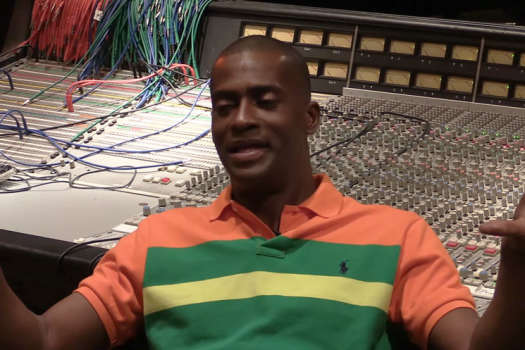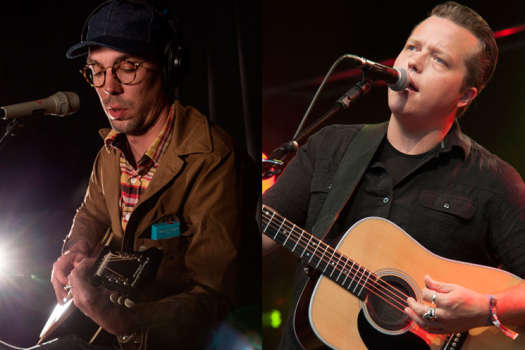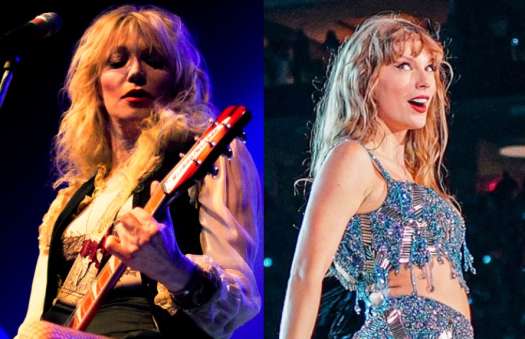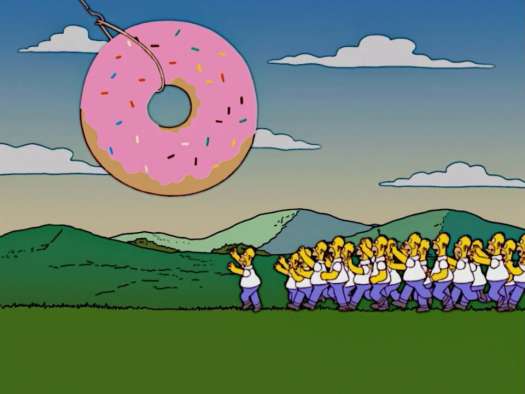There are days you realize love is not enough, is not forever. There are days you pack up your things and change cities. There, you write songs. Those songs give good advice. Soon you find yourself behind the wheel of a large automobile, Montreal and heartbreak in your rearview mirror. And as Ohio opens into Kentucky, the future is all green. You crank the Stevie Nicks and realize you have no more need to wonder where you are going, because you are already there.
In the summer of 2014, Canadian singer-songwriter Basia Bulat pulled up in her mother's car outside La La Land Studio in Louisville, Kentucky. To the public, she was on a roll, still promoting her third record, the critically acclaimed, Polaris Music Prize- and Juno Award-nominated Tall Tall Shadow. She was a few weeks away from headlining Toronto's historic Massey Hall. Life was good.
What the public didn't know, couldn't have known, is that Bulat had come to Louisville that day to record a breakup record, full of songs about lies and ghosts and long goodbyes. They weren't all sad songs — that was important — but they were all very personal, raw expressions of a difficult year in her life. And she was about to share them with a team of near-strangers, far from home.
"The one thing I knew about this album is that I didn't want to make something without the feeling of risk," Bulat says from her home in Montreal. "Going somewhere I've never recorded before and singing intensely personal songs to people I didn't know very well, I was in a very vulnerable place. I felt very protective. But I wanted to make this record. You can't make anything good if you're safe. You might embarrass yourself, but the rewards are huge."
In the room that day: Jim James of My Morning Jacket, the album's producer, who also played bass and guitar; David Givan on drums; and engineer Kevin Ratterman. Bulat walked in and started singing a song called "Time," a quietly powerful ballad about waiting for a phone call that may never come.
"We just went in and started playing. Once I started singing, I don't know… There are certain times when you're singing [and] you don't know you're singing, you forget. It's like athletes not remembering a great game. We just had a great take. Then we started working on 'Infamous.' I remember I walked out from the vocal booth and everybody was in tears. I think everyone was surprised by the energy. They seemed to really feel what I was trying to say. It was disarming. For me and for them."
Those songs, and those first takes in fact, appear on the final product, Good Advice. Her fourth studio album, it's the latest step in Bulat's evolution from indie-folk singer to alt-pop chanteuse. When she first emerged in 2005 with a self-titled indie EP, it was easy to slot her as a new Joni Mitchell or Buffy Sainte-Marie. (This is Canada, after all, where that search is a national pastime.) And in addition to being a singer-songwriter-guitarist, Bulat often appeared playing autoharp, an instrument more commonly heard in bluegrass and '60s folk and pop. (Some headlines declared that she'd made the autoharp "cool" again, which she finds hilarious. "Instruments can be cool or not cool now?")
But over her ten-year career, Bulat has expanded her emotional and musical palette. She's broken out of the folk festival circuit to tour with St. Vincent, Arcade Fire, the National and Nick Cave. Her sweet vibrato now resonates with more soul; her acoustic songs ring out with more instrumental complexity and colour. By 2013's Tall Tall Shadow, a more sonically diverse, electric record, Basia Bulat was her own national treasure, no longer "the next" anyone.
Tall Tall Shadow was also a record about loss — the death of a dear friend. Bulat doesn't like discussing the details, but reveals that fan reactions to the most heart-wrenching songs on the last album helped shape the approach to Good Advice.
"These two records are about very different kinds of loss," she says. "The reason I don't like to say too much beyond the lyrics is that it's not all just my story, you know? The hardest songs to sing are the ones that people come up to me after shows, and I know they really feel something from it. So I don't want to paint too strong a picture.
"I think the common thread is that I'm trying to find beauty in what was there," she continues, "having really learned that a lot of people go through what I'm going through, all the time, and that we have to keep going. I don't know. It's hard to explain… I think that's why I write songs, and I'm not a very good interview subject."
The road to Good Advice began in early 2014, when Bulat decamped from Toronto to Montreal to write. "It's a good city to mend a broken heart," she says. The singer, now 31, grew up in Etobicoke, a Toronto suburb, and lived in London, ON while attending the University of Western Ontario, but also has a long, intimate relationship with Montreal. It's home to her current label, Secret City, and it's where she's recorded most often, starting with 2007's full-length debut Oh, My Darling. She calls the move inevitable, like being the new kid in school, but surrounded by old friends.
But when it came time to put these new songs to tape, she had somewhere else to be.
Bulat has long been a fan of My Morning Jacket, and first met Jim James several years ago backstage at Austin City Limits, where she approached him with a copy of her second record, 2010's Heart of My Own. She opened some shows for him, and in 2013, James invited her to play charango (a small South American stringed instrument) on a session for Lost on the River, the Bob Dylan Basement Tapes project. (That particular performance has yet to be released.)
"I always imagined he'd be a good person to work with, but that's when I realized we could," she recalls. "We have a lot of music in common. And we're both the type of person who'd be willing to go up in a spaceship on last-minute notice."
When she enlisted James as a producer, Bulat had just one instruction: Help her do something new.
"I've always seen myself in a long tradition of the troubadour, playing guitar and singing, one of many throughout time," explains Bulat. "I love the folk tradition, and gospel and soul. And I liked applying the documentary approach to recording. But I have such a strong urge to keep changing, and not make the same record again and again. This time, I wanted to use the studio as an instrument, to look at sound in a different way. In the end, in order to move forward, I had to go back."
She means re-acquainting herself with her first musical love: the piano. Long before she became known for playing guitar, autoharp and charango, Bulat was the daughter of a piano teacher, and took her first lessons at age three. Her first instrument was a Casio keyboard, which she would "play" on long road trips with her mother from Toronto down to Windsor, ON.
"Four hours of me mashing my hands into the keys, making stuff up. My poor mom — it was endless!" she recalls, laughing.
At La La Land, they set up what Bulat calls "keyboard world," a horseshoe-shaped bank of instruments in which she could indulge. On "Time" alone, she's credited with playing piano, synthesizer, a 1970s RMI electra-piano, Marxophone (a type of zither), Mellotron and a vintage Hammond Novachord (recorded later in Calgary). Keys are the first thing you hear on lead track "La La Lie," and take a starring role in various forms throughout the record, like on the future pop of "Let Me In" and the '50s girl-group-style single "Fool." Asked about the vibe in the studio, Bulat describes it at weird, wonderful and fun.
"I've found my music gets brighter and brighter over time," she says. "I think my earlier stuff, I was interested in talking in a certain colour palette. I think because I'm more aware of all sides of everything every day, all colours are present, so I want to have them all in my music, all the time."
The wall-of-sound production style is something we've not quite heard from Bulat before, but fans of her earlier records will not be lost here. Good Advice is first and foremost a showcase for stand-out singing, both hers and from her supporting cast. Here, her vocals are both cocooned and buoyed by backup singers enlisted in Louisville: Lacey Guthrie, Katie Toupin, MaryLiz Bender, Sarah Teeple and Cher Von.
"It was very important to preserve the feminine vocals on the album," explains Bulat. "I've always had that as an anchor, the female harmonies, and I didn't want to lose it."
In addition to providing their talents, the local singers became fast friends, bonding during dinner breaks over music and their own life stories. It was just the latest in a line of women whose support made Good Advice a reality.
"I relied on a lot of women during the breakup," Bulat offers. "It's part of what the title Good Advice is about. I'm not fond of making grand statements, but I think the realm of the feminine — things like writing letters, and gossip, can be just as powerful, and have as much depth as, say, an epic poem, or historical narratives that can be associated more with masculinity. Gossip is a pejorative word, but the culture of advice, it should be celebrated."
More than a year after completing the recording and mixing, Basia Bulat is prepared to share her latest work with the public. She's keeping busy teaching herself ProTools and rehearsing for a big benefit concert for Tibet House at Carnegie Hall alongside Philip Glass. Otherwise, she's not thinking too much about how the public will relate to her current sound.
"When I made my first record, I didn't even imagine I'd release it," she says, "never mind make a life out of music. There are so many things you can't control, so I've never thought about the outcome. The goal is the music. You just do the work."
And the stories? And her heart? Did putting pen to paper and hands on strings help get over the breakup? Is Good Advice its own good advice?
"Do you know that book, The Prophet?," she asks. "[Kahlil Gibran] says your joy is your sorrow unmasked. I believe that both sides are always with you. I was trying to write to myself, to get through to that other side. I needed to go until I found a way to express that, the full spectrum, that I believed myself. It's hard to do in a three-minute composition. I hope I got it all in there!"
In the summer of 2014, Canadian singer-songwriter Basia Bulat pulled up in her mother's car outside La La Land Studio in Louisville, Kentucky. To the public, she was on a roll, still promoting her third record, the critically acclaimed, Polaris Music Prize- and Juno Award-nominated Tall Tall Shadow. She was a few weeks away from headlining Toronto's historic Massey Hall. Life was good.
What the public didn't know, couldn't have known, is that Bulat had come to Louisville that day to record a breakup record, full of songs about lies and ghosts and long goodbyes. They weren't all sad songs — that was important — but they were all very personal, raw expressions of a difficult year in her life. And she was about to share them with a team of near-strangers, far from home.
"The one thing I knew about this album is that I didn't want to make something without the feeling of risk," Bulat says from her home in Montreal. "Going somewhere I've never recorded before and singing intensely personal songs to people I didn't know very well, I was in a very vulnerable place. I felt very protective. But I wanted to make this record. You can't make anything good if you're safe. You might embarrass yourself, but the rewards are huge."
In the room that day: Jim James of My Morning Jacket, the album's producer, who also played bass and guitar; David Givan on drums; and engineer Kevin Ratterman. Bulat walked in and started singing a song called "Time," a quietly powerful ballad about waiting for a phone call that may never come.
"We just went in and started playing. Once I started singing, I don't know… There are certain times when you're singing [and] you don't know you're singing, you forget. It's like athletes not remembering a great game. We just had a great take. Then we started working on 'Infamous.' I remember I walked out from the vocal booth and everybody was in tears. I think everyone was surprised by the energy. They seemed to really feel what I was trying to say. It was disarming. For me and for them."
Those songs, and those first takes in fact, appear on the final product, Good Advice. Her fourth studio album, it's the latest step in Bulat's evolution from indie-folk singer to alt-pop chanteuse. When she first emerged in 2005 with a self-titled indie EP, it was easy to slot her as a new Joni Mitchell or Buffy Sainte-Marie. (This is Canada, after all, where that search is a national pastime.) And in addition to being a singer-songwriter-guitarist, Bulat often appeared playing autoharp, an instrument more commonly heard in bluegrass and '60s folk and pop. (Some headlines declared that she'd made the autoharp "cool" again, which she finds hilarious. "Instruments can be cool or not cool now?")
But over her ten-year career, Bulat has expanded her emotional and musical palette. She's broken out of the folk festival circuit to tour with St. Vincent, Arcade Fire, the National and Nick Cave. Her sweet vibrato now resonates with more soul; her acoustic songs ring out with more instrumental complexity and colour. By 2013's Tall Tall Shadow, a more sonically diverse, electric record, Basia Bulat was her own national treasure, no longer "the next" anyone.
Tall Tall Shadow was also a record about loss — the death of a dear friend. Bulat doesn't like discussing the details, but reveals that fan reactions to the most heart-wrenching songs on the last album helped shape the approach to Good Advice.
"These two records are about very different kinds of loss," she says. "The reason I don't like to say too much beyond the lyrics is that it's not all just my story, you know? The hardest songs to sing are the ones that people come up to me after shows, and I know they really feel something from it. So I don't want to paint too strong a picture.
"I think the common thread is that I'm trying to find beauty in what was there," she continues, "having really learned that a lot of people go through what I'm going through, all the time, and that we have to keep going. I don't know. It's hard to explain… I think that's why I write songs, and I'm not a very good interview subject."
The road to Good Advice began in early 2014, when Bulat decamped from Toronto to Montreal to write. "It's a good city to mend a broken heart," she says. The singer, now 31, grew up in Etobicoke, a Toronto suburb, and lived in London, ON while attending the University of Western Ontario, but also has a long, intimate relationship with Montreal. It's home to her current label, Secret City, and it's where she's recorded most often, starting with 2007's full-length debut Oh, My Darling. She calls the move inevitable, like being the new kid in school, but surrounded by old friends.
But when it came time to put these new songs to tape, she had somewhere else to be.
Bulat has long been a fan of My Morning Jacket, and first met Jim James several years ago backstage at Austin City Limits, where she approached him with a copy of her second record, 2010's Heart of My Own. She opened some shows for him, and in 2013, James invited her to play charango (a small South American stringed instrument) on a session for Lost on the River, the Bob Dylan Basement Tapes project. (That particular performance has yet to be released.)
"I always imagined he'd be a good person to work with, but that's when I realized we could," she recalls. "We have a lot of music in common. And we're both the type of person who'd be willing to go up in a spaceship on last-minute notice."
When she enlisted James as a producer, Bulat had just one instruction: Help her do something new.
"I've always seen myself in a long tradition of the troubadour, playing guitar and singing, one of many throughout time," explains Bulat. "I love the folk tradition, and gospel and soul. And I liked applying the documentary approach to recording. But I have such a strong urge to keep changing, and not make the same record again and again. This time, I wanted to use the studio as an instrument, to look at sound in a different way. In the end, in order to move forward, I had to go back."
She means re-acquainting herself with her first musical love: the piano. Long before she became known for playing guitar, autoharp and charango, Bulat was the daughter of a piano teacher, and took her first lessons at age three. Her first instrument was a Casio keyboard, which she would "play" on long road trips with her mother from Toronto down to Windsor, ON.
"Four hours of me mashing my hands into the keys, making stuff up. My poor mom — it was endless!" she recalls, laughing.
At La La Land, they set up what Bulat calls "keyboard world," a horseshoe-shaped bank of instruments in which she could indulge. On "Time" alone, she's credited with playing piano, synthesizer, a 1970s RMI electra-piano, Marxophone (a type of zither), Mellotron and a vintage Hammond Novachord (recorded later in Calgary). Keys are the first thing you hear on lead track "La La Lie," and take a starring role in various forms throughout the record, like on the future pop of "Let Me In" and the '50s girl-group-style single "Fool." Asked about the vibe in the studio, Bulat describes it at weird, wonderful and fun.
"I've found my music gets brighter and brighter over time," she says. "I think my earlier stuff, I was interested in talking in a certain colour palette. I think because I'm more aware of all sides of everything every day, all colours are present, so I want to have them all in my music, all the time."
The wall-of-sound production style is something we've not quite heard from Bulat before, but fans of her earlier records will not be lost here. Good Advice is first and foremost a showcase for stand-out singing, both hers and from her supporting cast. Here, her vocals are both cocooned and buoyed by backup singers enlisted in Louisville: Lacey Guthrie, Katie Toupin, MaryLiz Bender, Sarah Teeple and Cher Von.
"It was very important to preserve the feminine vocals on the album," explains Bulat. "I've always had that as an anchor, the female harmonies, and I didn't want to lose it."
In addition to providing their talents, the local singers became fast friends, bonding during dinner breaks over music and their own life stories. It was just the latest in a line of women whose support made Good Advice a reality.
"I relied on a lot of women during the breakup," Bulat offers. "It's part of what the title Good Advice is about. I'm not fond of making grand statements, but I think the realm of the feminine — things like writing letters, and gossip, can be just as powerful, and have as much depth as, say, an epic poem, or historical narratives that can be associated more with masculinity. Gossip is a pejorative word, but the culture of advice, it should be celebrated."
More than a year after completing the recording and mixing, Basia Bulat is prepared to share her latest work with the public. She's keeping busy teaching herself ProTools and rehearsing for a big benefit concert for Tibet House at Carnegie Hall alongside Philip Glass. Otherwise, she's not thinking too much about how the public will relate to her current sound.
"When I made my first record, I didn't even imagine I'd release it," she says, "never mind make a life out of music. There are so many things you can't control, so I've never thought about the outcome. The goal is the music. You just do the work."
And the stories? And her heart? Did putting pen to paper and hands on strings help get over the breakup? Is Good Advice its own good advice?
"Do you know that book, The Prophet?," she asks. "[Kahlil Gibran] says your joy is your sorrow unmasked. I believe that both sides are always with you. I was trying to write to myself, to get through to that other side. I needed to go until I found a way to express that, the full spectrum, that I believed myself. It's hard to do in a three-minute composition. I hope I got it all in there!"




